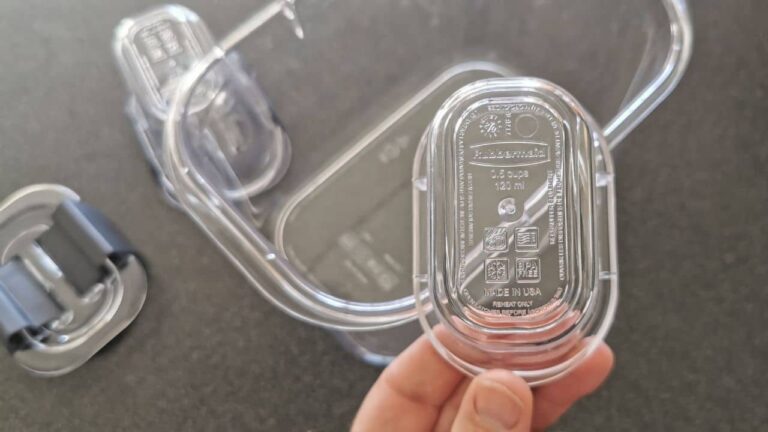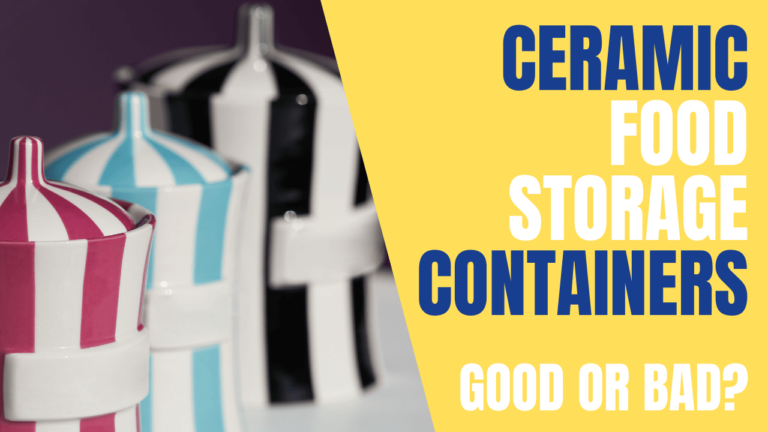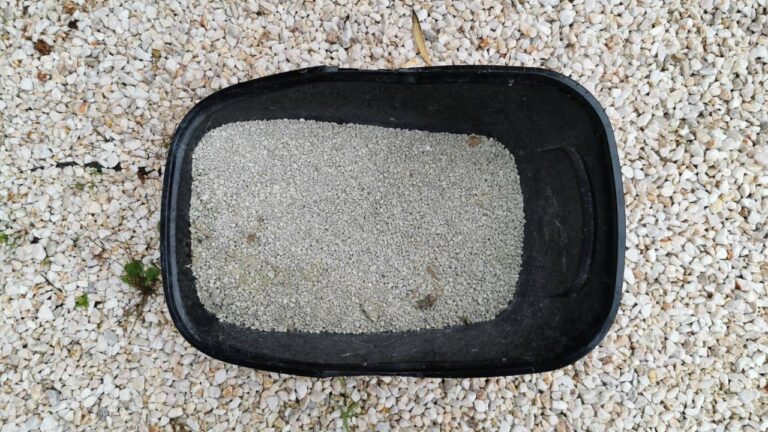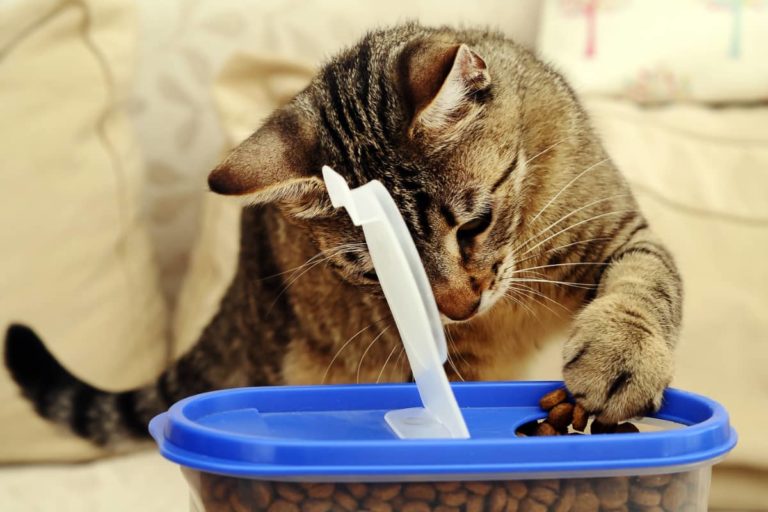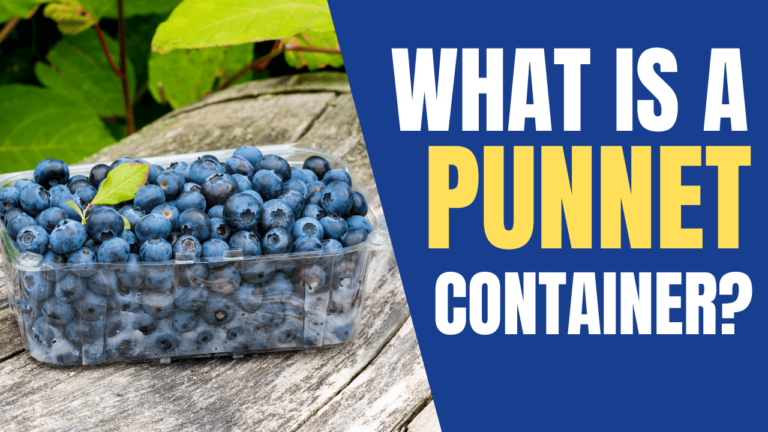Grayl Water Bottle vs LifeStraw: The Clear Winner
Hey there, fellow outdoor enthusiasts! I recently took the Grayl Water Bottle and the LifeStraw for a spin on some of my favorite trails, and boy, do I have some insights to share!
As an avid hiker and camper, I can’t stress enough how essential clean drinking water is when you’re out exploring nature. That’s where products like the Grayl Water Bottle and the LifeStraw come in – they promise to deliver just that.
But let me tell you, not all water purifiers are created equal. One of these products truly impressed me and came out as a clear frontrunner.
Eager to find out which one? Let me share with you my very own hands-on review!”
The Grayl Water Bottle
I recently switched to the Grayl water bottle, and let me tell you, I haven’t looked back. Here’s a sneak peek into its pros and cons, straight from my experiences.

Detailed description of the grayl water bottle
The Grayl Water Bottle is a portable filtration and purification system that magically turns contaminated water into drinkable water. It operates with a replaceable filter cartridge that eliminates bacteria, protozoa, viruses, and other water contaminants.
The filtration system combines activated carbon and electro-absorption, working in tandem to filter out sediment, particles, heavy metals, pesticides, and even microplastics from your water.
Unlike the LifeStraw water bottle, which I’ll touch on later, the Grayl requires you to use your body weight to purify the water.
The Grayl Water Bottle comes in two models: the Geopress and the Ultralight. The Geopress is a bit heavier and more robust, making it perfect for hiking and camping.
On the other hand, the Ultralight, as the name suggests, is lighter and more compact, making it ideal for travel. Personally, I found the Geopress model to be just what I was looking for.
Key features of the grayl water bottle
Here are some of the standout features of the Grayl Water Bottle:
- Manual filtration and purification system that removes bacteria, protozoa, viruses, and other water contaminants.
- Replaceable filter cartridge that lasts up to 350 uses, or about 65 gallons/250 liters.
- Available in two models: the Geopress and the Ultralight.
- Electro-absorption and activated carbon remove sediment, particles, heavy metals, pesticides, and microplastics from the water.
- Its durable, lightweight design makes it perfect for outdoor adventures and travel.
Pros and cons of the grayl water bottle
Like all products, the Grayl Water Bottle has its strengths and weaknesses. Here are some I’ve noticed:
Pros
- Provides clean and safe drinking water, no matter where you are.
- Lightweight and durable, perfect for outdoor adventures and travel.
- The replaceable filter cartridge can be used up to 350 times.
- Eliminates a wide range of contaminants, including bacteria, protozoa, viruses, and heavy metals.
- Available in two models to suit different needs and preferences.
Cons
- Pricier than other water filtration systems on the market, making it a significant investment.
- The replacement filter cartridges can be costly. At the time of writing this article, a cartridge on Amazon is priced between $30 and $35.
- Requires some maintenance for the filter to work properly.
Ideal usage scenarios for the grayl water bottle
The Grayl Water Bottle is ideal for anyone who spends time outdoors or travels to areas where access to clean drinking water is limited. Here are a few scenarios where the Grayl Water Bottle would come in especially handy:
- Hiking or camping in places where access to clean water is limited
- Traveling to countries where tap water is not safe to drink
- Emergency preparedness kits for natural disasters or other emergency situations
- Backcountry adventures where water sources may be contaminated
Ever since I got my hands on the Grayl Geopress water bottle, I’ve been totally wowed. I would recommend it to anyone seeking a reliable and effective water filtration and purification system.
Yes, it may be pricier than other options on the market, but trust me, the quality and durability of this.
The LifeStraw Water Bottle
When comparing the Grayl water bottle and the LifeStraw, I found that the LifeStraw is a great choice for those in need of a lightweight, affordable water filter. And I can speak from experience because I’ve been using this model for over two years now.

Here are some insights I can offer about this bottle that has faithfully accompanied me on many hiking trails.
Important: I’m discussing the old model LifeStraw here, which differs slightly from the current model (on the new model, the cap has been redesigned to be less fragile than on the old model).
Detailed description of the Lifestraw
The LifeStraw is a personal water filter designed to filter out bacteria and protozoa from water sources. It’s a straw-like device that you can use to drink directly from a stream, lake, or other fresh water sources.
Although the LifeStraw model is slightly smaller than its competitor (22oz vs 24oz for the Grayl), the replaceable filter cartridge can filter up to 1,000 liters of water before needing replacement. That’s nearly three times more than the Grayl Geopress model!
But note that the filtration system is entirely different from that of the Grayl Geopress. In fact, water filtration happens at the moment you suck through the mouth-piece.
Key features of the Lifestraw
- Lightweight: Weighing only 8.7 ounces, it makes an ultralight option for hiking or traveling.
- Affordable: This model stands as a budget-friendly option for those in need of a water filter.
- Ease of Use: Straightforward operation involves dipping it in water and sucking through the straw.
- Durability: Constructed from sturdy plastic, it can withstand rough handling.
- Replaceable Filter: This feature includes a replaceable filter cartridge that can cleanse up to 1,000 liters of water.
- Effective Filtration: Capable of filtering out bacteria and protozoa from various water sources.
Pros and cons of Lifestraw
Pros:
- Lightweight and compact, making it easy to carry around.
- Affordable price.
- Effective filtration of bacteria and protozoa.
- Simple and easy to use.
- Meets NSF p231 protocol!
- Affordable filter replacement with a price hovering around $25.
- Made from 50% post -consumer recycled plastic.
Cons:
- A significant drawback of the LifeStraw is its design as a personal filter straw, which limits its use to individuals only.
- The filtration system is not the most efficient or convenient as it happens when you suck.
- The old model features a cap that’s not very practical and can be easily dirtied or damaged. This problem has been resolved with the arrival of the new model (Go Series).
- Does not filter out viruses or chemicals.
Ideal usage scenarios for the Lifestraw
The LifeStraw is an ideal option for those in need of a lightweight, affordable water filter for hiking, camping, or traveling. It’s also an excellent choice for emergency preparedness kits or for use in areas where tap water may be contaminated.
Overall, the LifeStraw is a solid choice for those who need a simple, affordable water filter for outdoor activities or emergency situations.
Direct Comparison: Grayl Water Bottle vs LifeStraw
Comparative analysis of their purification methods
Grayl Geopress
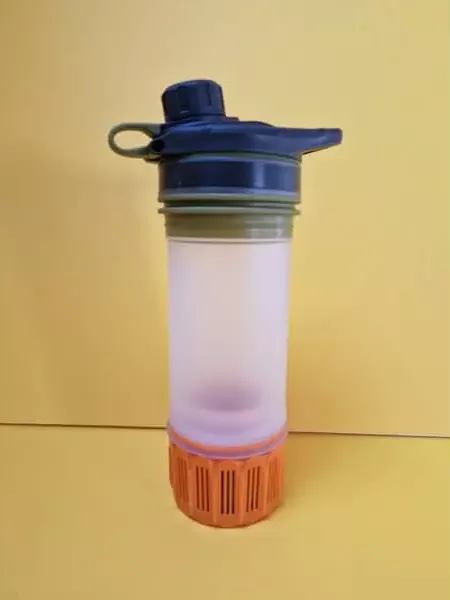
This model uses electroadsorption and ultra-powdered activated carbon, offering:
– Pathogen removal: 99.99% of viruses, 99.9999% of bacteria, 99.9% of protozoan cysts.
– Filters: particulates like silt and microplastics, plus chemicals, pesticides, heavy metals, flavors, and odors.
– Fast Flow Rate: 24 ounces in 8 seconds.
– Cartridge lifespan: 350 cycles (about 65 gallons or 250 liters).
– Standards: Meets NSF/ANSI protocols 42 and 53, and EPA Guide Standard for testing microbiological water purifiers.
LifeStraw
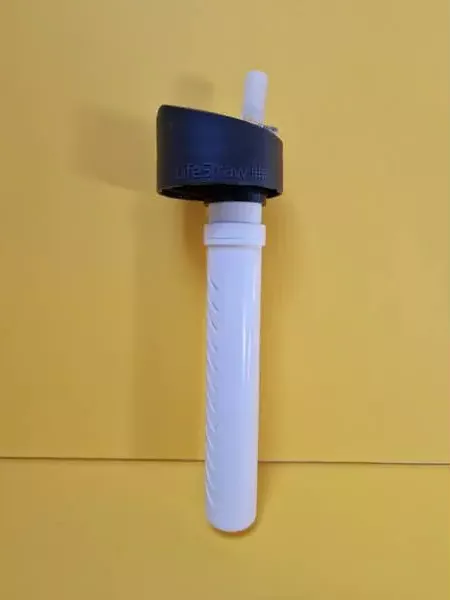
On the other hand, LifeStraw uses a hollow fiber membrane to filter out bacteria and parasites, but it does not remove viruses or heavy metals.
The LifeStraw features a 0.2-micron filter and meets the NSF/ANSI P231 standard, boasting:
– Pathogen removal: 99.999999% of bacteria, various parasites.
– Filters: 99.999% of microplastics and reduces water turbidity.
– Pore size: 0.2 micron.
– Standards: Meets protocols set by the US EPA and NSF International/ANSI.
Comparing the durability and lifespan of both products
Both the Grayl Water Bottle and the LifeStraw are real tough cookies in the world of water filtration. The Grayl Geopress is built like a tank, crafted with top-tier materials designed to keep up with you for years. Plus, it comes with a lifetime warranty, so you can tell Grayl’s really put their money where their mouth is when it comes to durability.
Now, the LifeStraw, on the other hand, might not have quite the same lifespan as the Grayl, but it’s still a pretty sturdy little gadget. The filter cartridges on the LifeStraw will see you through 1000 liters of water before they need swapping out. As for Grayl, their filter cartridge hangs in there for 250 liters.
So, whichever way you slice it, both these contenders are in it for the long haul!
Taking a peek at price and bang for your buck
Sure, at first glance, the Grayl Water Bottle might make your wallet a bit nervous – it’s pricier than the LifeStraw. So much so, you could scoop up two LifeStraws for the price of one Grayl!
But, remember the old saying, “you get what you pay for”. Grayl, with its super-powered filtration capabilities that scrub away all those pesky contaminants, really shows its worth. It’s like investing in a safe and refreshing drinking experience, wherever you roam!
Plus, it’s got longevity on its side, going the extra mile compared to the LifeStraw.
And there’s more to Grayl’s value than just the bottle itself. Their products come with a lifetime warranty. Now, that’s not just a confidence booster, it’s a clear statement about the product’s quality.
So, while you might be paying a bit more upfront with Grayl, it’s an investment that’s set to pay off in the long run.
Head-to-Head: Grayl Water Bottle vs LifeStraw Detailed Comparison
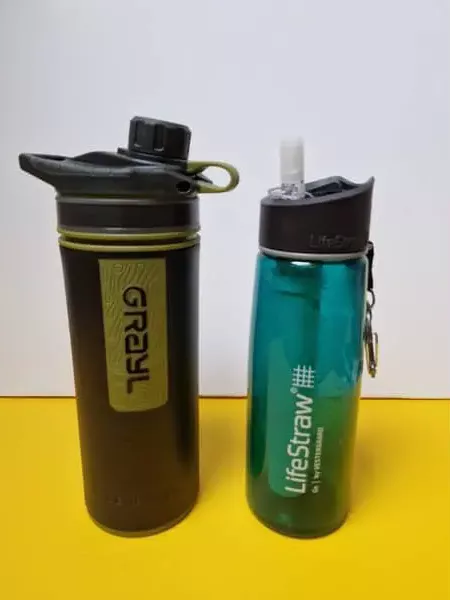
| Grayl | LifeStraw (new model Go Series) | |
| Capacity | 24 oz (710 ml) | 22 oz (650 ml) Available in 34 oz |
| Weight | 15.9 oz (450 g) | 8.7 oz (247 g) |
| Height | 10.4″ (26.5 cm) | 11.02″ (28 cm) |
| Diameter (at base) | 3.4″ (8.6 cm) | 3.07″ (7.8 cm) |
| Fastest Flow Rate | 8 seconds per 24oz (5 liters/minute) | / |
| Cartridge lifespan | Rated for 350 cycles (65 gal. / 250L) | Rated for 1,000 gal. (4,000 L) |
| BPA-Free materials | Yes Polypropylene #5 (bottle) Food-grade silicone TPE (thermoplastic elastomer) ABS food-grade plastic | Yes Tritan #7 (bottle) |
| NSF Standard | Protocol 42 and 53 | Protocol 42 & P231 |
| Made in | China | South Korea |
| Price | $99.95 | $44.95 |
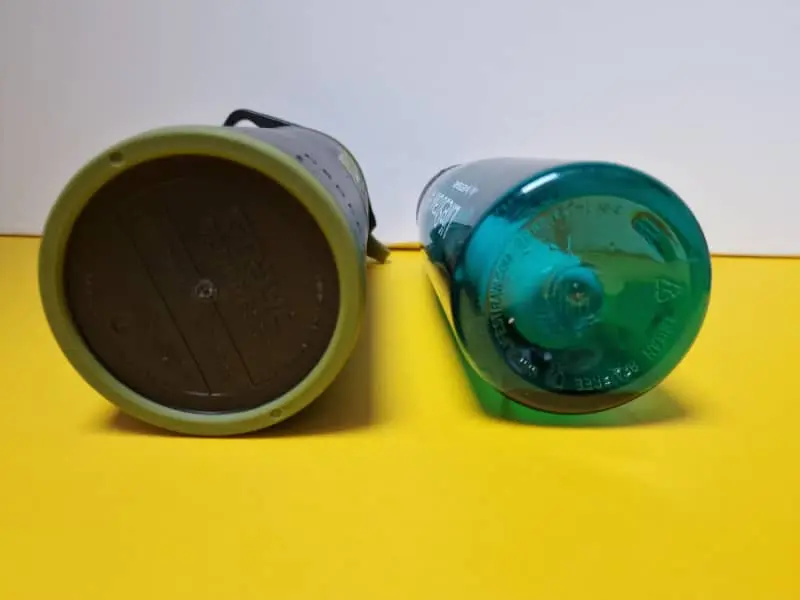
Conclusion
Alright folks, we’ve had a close look at both Grayl and LifeStraw, two heavyweights in the world of portable water filtration. Both bring a lot to the table.
Grayl’s Ultralight model is a breeze to lug around on your adventures, fitting snugly into your backpack. LifeStraw also gives us a feather-light option, although they can’t quite compete with Grayl when it comes to compactness.
In terms of maintenance, Grayl takes the cake again, proving easier to handle compared to LifeStraw.
Alright, drumroll, please… It’s time for the verdict.
And the Winner Is?
Alright folks, it’s drumroll time! After several months of rigorous testing and careful analysis, I’m ready to make my verdict. Now, this is just my two cents, based on my own experience, but I’m tipping my hat to… the Grayl Water Bottle as our undisputed champion!
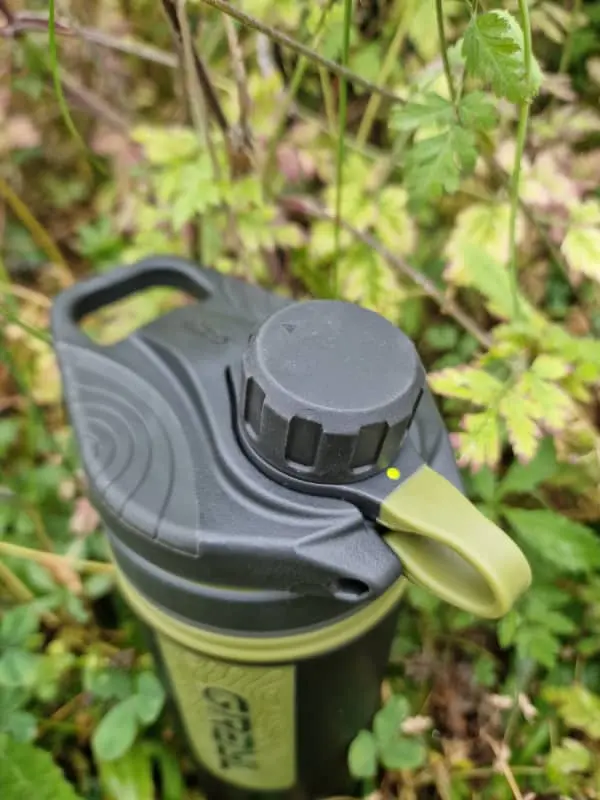
When it comes to water filtration, Grayl outshines LifeStraw with a winning combo of efficiency, effectiveness, and durability. But wait, there’s more! Grayl doesn’t just provide sterling performance – it also gives you amazing bang for your buck and the peace of mind of a lifetime warranty.
But here’s the real clincher for me, folks: with the Grayl water bottle, you can share the filtered water bounty with your friends or family. Cooking up a storm at a camping site? Grayl’s got your back! That’s a big plus in my book, and unfortunately, LifeStraw misses out on this, as its filtration only works via direct suction.
Of course, let’s not forget LifeStraw – it’s a worthy competitor with its own set of advantages. But when all’s said and done, Grayl stands victorious, proudly wearing the crown.
So, if you’re in the market for a reliable, portable water filtration system, I’d heartily recommend making the Grayl Water Bottle your top choice. It might just become your favorite travel buddy!
I hope you enjoyed this comparison between the water filtration bottles, and feel free to share your thoughts in the comments. Who knows, I might find opinions that differ from mine and discover other filtration bottles as efficient as the ones I just presented to you!


